 August 5, 2015. Today is Recipe for Success Foundation's tenth birthday, when the new non-profit I registered with the Secretary of State was officially acknowledged and our work could commence. When I received that stamped document, I had a list in my hand of the projects I wanted to execute with this new foundation: teach kids to cook and garden, publish cookbooks for kids, create an urban farm in Houston and produce a kids cooking television show. It was a lot, but I am a headstrong Gemini; I was confident in my vision, fueled by my passion and enabled by a generous grant from my husband, the support of my kids, the enthusiasm of my friends and the ability to work for free.
August 5, 2015. Today is Recipe for Success Foundation's tenth birthday, when the new non-profit I registered with the Secretary of State was officially acknowledged and our work could commence. When I received that stamped document, I had a list in my hand of the projects I wanted to execute with this new foundation: teach kids to cook and garden, publish cookbooks for kids, create an urban farm in Houston and produce a kids cooking television show. It was a lot, but I am a headstrong Gemini; I was confident in my vision, fueled by my passion and enabled by a generous grant from my husband, the support of my kids, the enthusiasm of my friends and the ability to work for free.
Ten years and 30,000+ kids later we are commencing today on a yearlong celebration of our roots while we plant the seeds of our future. Throughout the year, we will be celebrating all those folks--family, friends, chefs, volunteers and patrons who have helped turn my dream into a reality. Before the year is out, we will have checked the box on each of those original projects--with some having grown to a national footprint beyond my wildest dreams, and we have added a few more to the list. We aren't pausing, satisfied that our work is done, but we are taking the moment to reflect on that original vision and all that has gone into turning it into a real Recipe for Success!
By that summer of 2005, I had already been dancing around the edges of getting proactive for years after discovering to my horror the breathtaking rates of childhood obesity, especially in Texas. I first worked to get soda machines removed from our elementary schools, and then I created the Recipe for Success initiative of our family foundation to launch informal talks among stakeholders in Houston to map out a possible solution plan that captured synergies. There was lots of handwringing, plenty of ideas, not a lot of collaborative action. I realized that I would need to be more than a yenta; I would have to jump in and do something. That ignited my insatiable study of how other communities--at home and abroad--were addressing this issue and what the global experts and researchers were saying was at the root of the problem. I got my hands on Slow Food's Terre Madre curriculum for Italian children and Jamie Oliver's lesson plans for his London project and the Minister of Culture's outreach materials for French schoolchildren and I looked at Alice Water's nascent project in Berkley. I read research studies and white papers like novels, including Robert Wood Johnson's comprehensive community action plan, developed with a national advisory group and the American Public Health Association and published in 2003. It became my bible.
I didn't have a personal dog in the hunt, what I did have was a lot of time on my hands after retiring from decades of workaholic behavior, a personal passion for cooking, local food and gardening and the pleasure of seeing family and friends regularly around my dining table. And after many years in the hospitality industry, I enjoyed friendships with loads of great chefs. If I was going to get into this fight to make a difference, I knew that I had to connect my work to my passion. When I discovered that of all the causes of childhood obesity--and there are many, the predominant, underlying issues were the changes in the food we eat and the way we eat it. Cooking fresh food from scratch and sharing it around the table with family and friends--this was a campaign I could get behind and I knew just the group to add some spice to my efforts.
My first call very early on was to Monica Pope. If I wanted to teach kids to cook, would you help me? She likes to say now, that she really didn't think I would actually do anything, so it was easy to say yes. But when I circled back in 2005 and said I was ready, she swung into action helping me convince other Houston chefs to join us. Bob and I invited dozens of chefs and many of our friends to a Sunday brunch at our place, so I could tell everyone at once what our plan was.  Monica hosted a gathering in November at tafia for our new Houston First Lady, Andrea White's We Are All Neighbors outreach to Houston's community leaders to showcase Chefs in Schools™ the first project I planned to launch. Monica, Claire Smith, Lance Fegan and Bryan Caswell prepared the lunch with food donated from Jolie Vue, Lowell Farms, Gunderson Farms, Bar N Ranch and Rio Grande Organics. Flat Creek Estate, Haak Vineyards and Texas Hills Vineyards poured their wines.
Monica hosted a gathering in November at tafia for our new Houston First Lady, Andrea White's We Are All Neighbors outreach to Houston's community leaders to showcase Chefs in Schools™ the first project I planned to launch. Monica, Claire Smith, Lance Fegan and Bryan Caswell prepared the lunch with food donated from Jolie Vue, Lowell Farms, Gunderson Farms, Bar N Ranch and Rio Grande Organics. Flat Creek Estate, Haak Vineyards and Texas Hills Vineyards poured their wines.
By December, fueled by those two gatherings, we had recruited a dozen folks to join our board of directors and twenty-five chefs to help: John Brock, Carolyn Carcassi, Bryan Caswell, Charles Clark, Louis Cressy, Robert del Grande, Randy Evans, Lance Fegan, Chris Garcia , Peter Garcia, Lauren Gockley, Jason Gould, Anita Jasinghani, Ouisie Jones, Al King, Sandra Mangini, Jim Manning, Veronica Ortiz, Monica Pope, Philippe Schmidt, John Sheely, Randy Rucker, Chris Shepherd, Claire Smith and Brendon Treanor.
All spring, while I worked with Linda Clarke--Mayor Bill White's Special Advisor for Education, to line up schools for our pilot program, we started raising money. If Recipe for Success was going to be a public foundation, we needed 75% of our support to come from outside our family. Cissy Segall Davis, jumped in to lend a hand with a series of special events I called We're Cooking Now, a gala in small bites. The concept of a deconstructed gala made up of exquisite dinner parties in private homes was perhaps a reaction to the past decade during which Bob and I chaired and attended scores of galas, but it also exemplified the culture we wanted to promote and teach. We produced a dozen small dinners individually hosted by Cathy Brock, Yvonne & Rufus Cormier, Franci Neely, Gayle & Mike DeGeurin, Sonny Garza, Phyllis Hand, Eileen & George Hricik, Karen & Mike Mayell, Phyllis Childress, Kim & Dan Tutcher, Andrea & Bill White and Bob & me, each featuring a headliner chef. Two hundred donors came to dinner. We finished that first year with money in the bank, a committed founding board of directors, dozens of chefs willing to help and a plan of action in hand. It was the start of something big.
 If you have visited Hope Farms lately, you may have seen a sweet little white studio rising in the midst of a field of flowers. Say hello to Flower Child Urban Flower Farm & Studio, our first Hope Farms agricultural tennant. This is what I did on my "COVID vacation"--start a flower farm. My goal is to provide a eco-friendly flower source for Houstonians that will have a positive carbon footprint and complement our work at Hope Farms.
If you have visited Hope Farms lately, you may have seen a sweet little white studio rising in the midst of a field of flowers. Say hello to Flower Child Urban Flower Farm & Studio, our first Hope Farms agricultural tennant. This is what I did on my "COVID vacation"--start a flower farm. My goal is to provide a eco-friendly flower source for Houstonians that will have a positive carbon footprint and complement our work at Hope Farms.




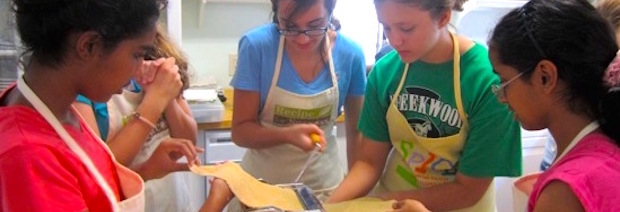







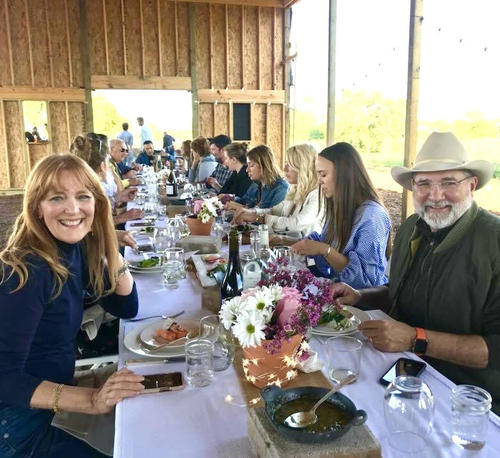


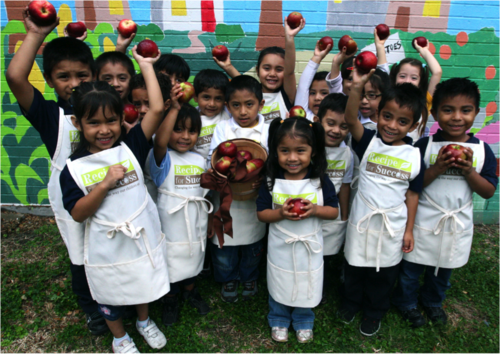




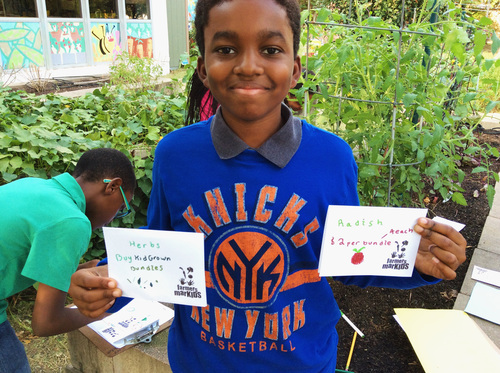



















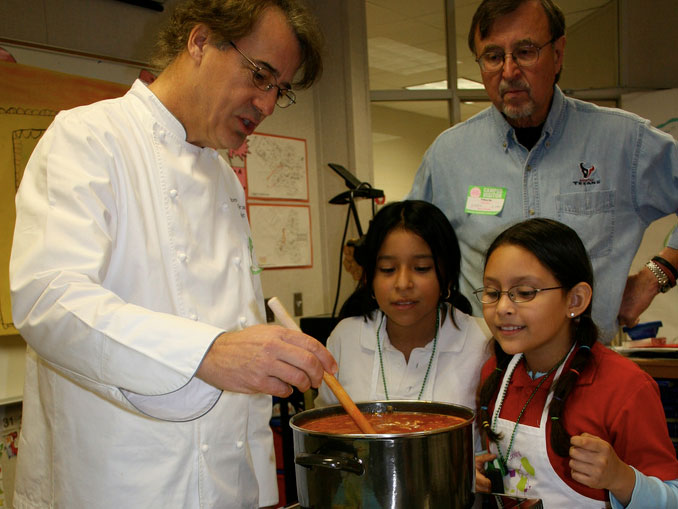 The French eat a greater diversity of fresh food, but less of it. French school lunches feature items like beet salad, butter beans, grated carrot salad, cauliflower casserole, endive and even escargots. Vending machines are banned at school and beverages are limited to water. France has a soda tax on all soft drinks and advertisements for junk food carry a health warning.
The French eat a greater diversity of fresh food, but less of it. French school lunches feature items like beet salad, butter beans, grated carrot salad, cauliflower casserole, endive and even escargots. Vending machines are banned at school and beverages are limited to water. France has a soda tax on all soft drinks and advertisements for junk food carry a health warning.







